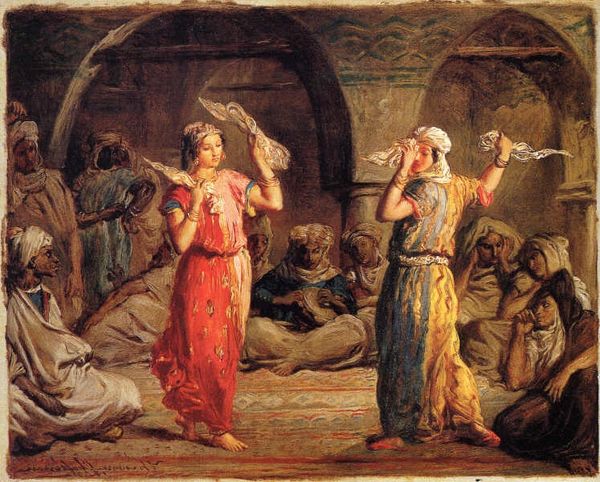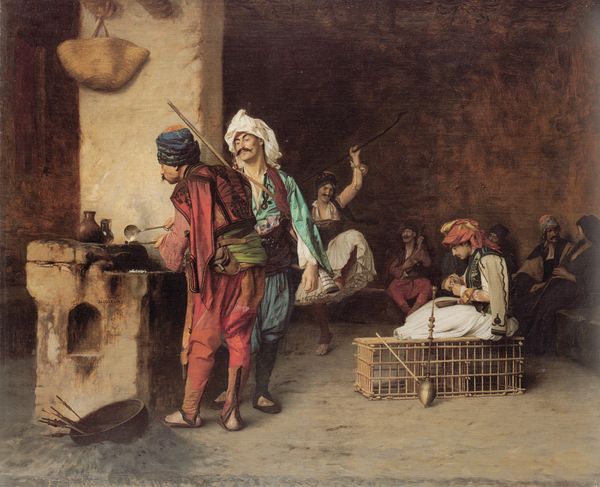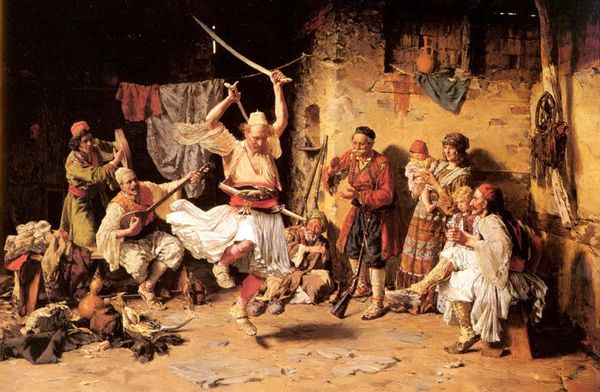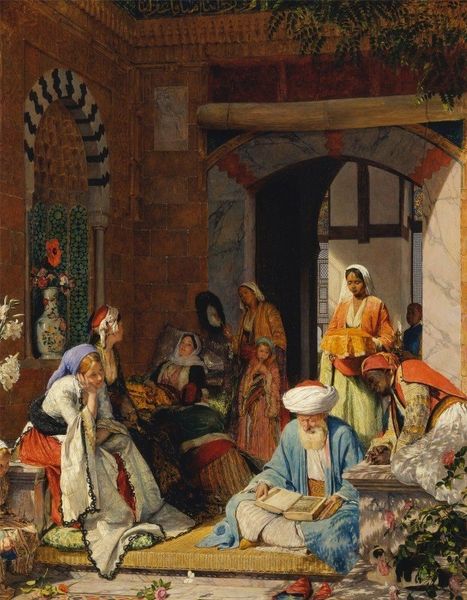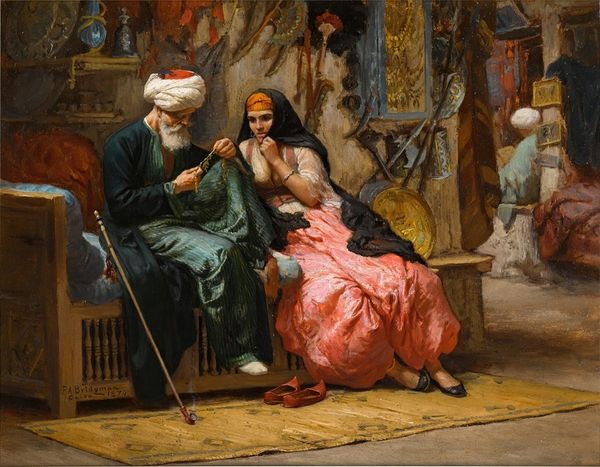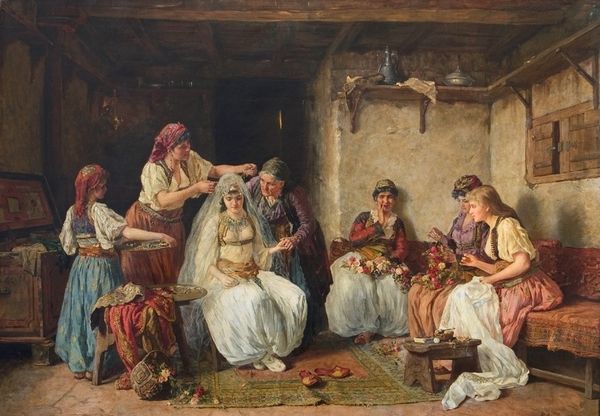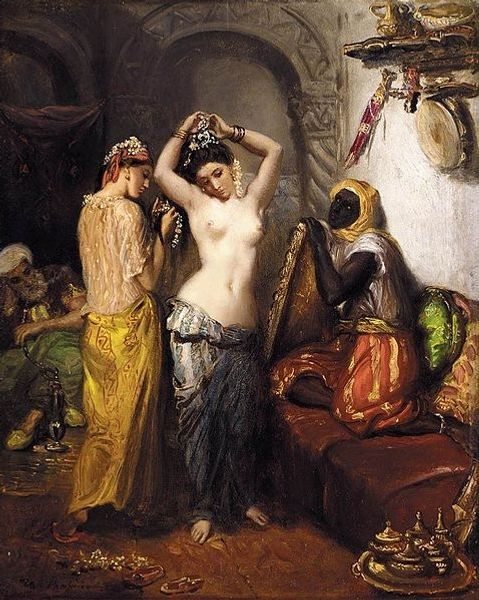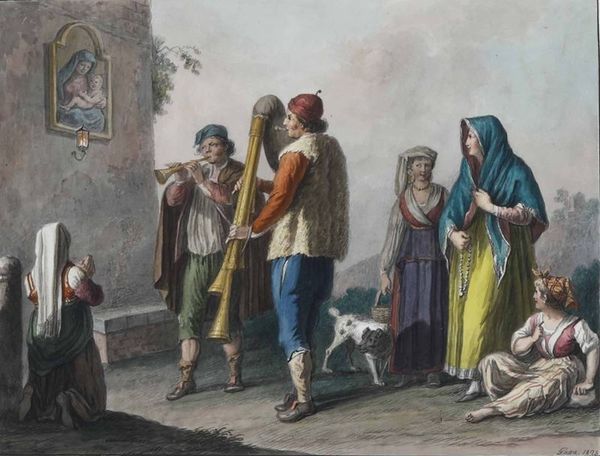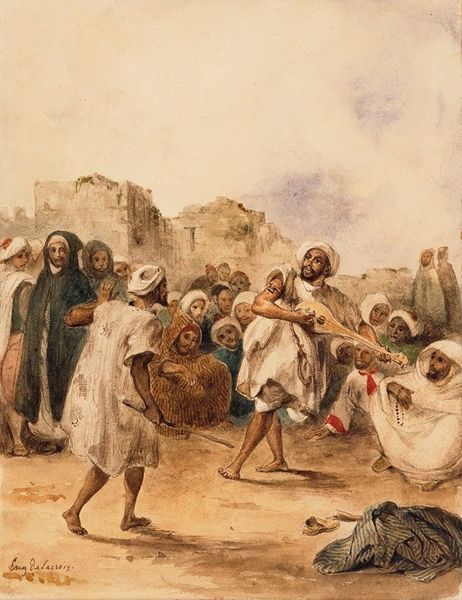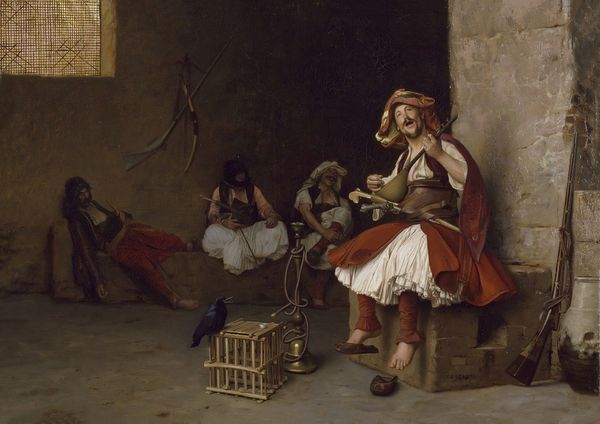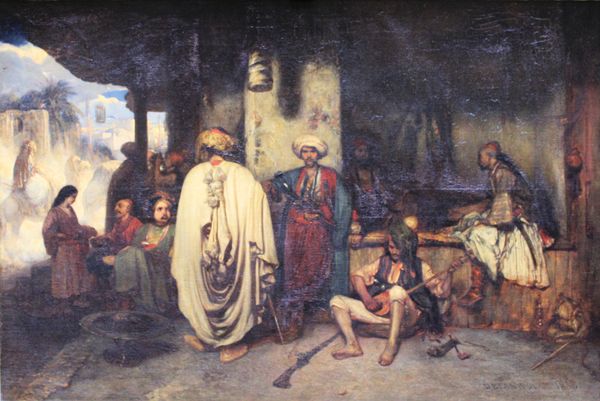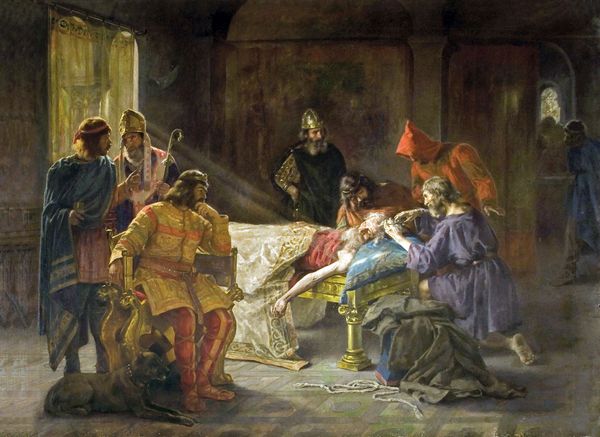
Dimensions: 50.16 x 81.28 cm
Copyright: Public domain
Curator: Here we have Jean-Léon Gérôme’s “The Dance of the Almeh,” an oil on canvas completed in 1863. Editor: It has this rather... staged feel. The dancer, this central figure, seems almost like a posed mannequin amidst a somewhat somber, dimly lit setting. Curator: Indeed. The painting exemplifies Orientalism, a 19th-century academic style. Note the meticulous detail in rendering textures and patterns, the focus on ethnographic accuracy within what is essentially a genre scene. Editor: "Accuracy" is a loaded term here. Considering the gaze—Europeans representing the "Orient"—it perpetuates colonial power dynamics and often exoticizes or sexualizes the subjects, as evident in the dancer’s attire and the focused gazes upon her. Curator: True, yet the painting's composition guides our eye meticulously. The artist uses light to draw attention to the dancer while carefully placing secondary figures around her. The weaponry propped along the wall to the left creates a sharp angular contrast with the fluid lines of the dancer's body, creating dynamic tension within the plane. Editor: I see that, and I appreciate how you address these aesthetic aspects, yet the semiotics of these representations are more complex than mere visual enjoyment. What does it mean to fetishize another culture in this manner? Gérôme certainly partook in solidifying these ideas through such carefully orchestrated "Orientalist" narratives. Curator: Absolutely. It's vital to examine how cultural narratives intersect and inform our perception. The dance, presented as spectacle, must be understood against colonial projections. The light, shadow, color palette, everything comes together as more than mere composition when understood in this context. Editor: Ultimately, exploring a piece like "The Dance of the Almeh" allows us to critically reflect not only on art historical movements but also on the legacy of cultural representation and the responsibility we share in unpacking its multilayered meanings. Curator: A testament to the enduring power and challenging nature of visual art to engage us in the discourse that continues long past an artist's life.
Comments
No comments
Be the first to comment and join the conversation on the ultimate creative platform.
